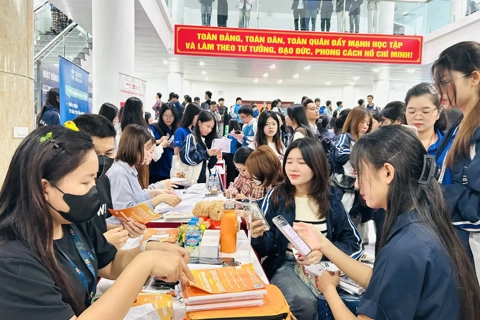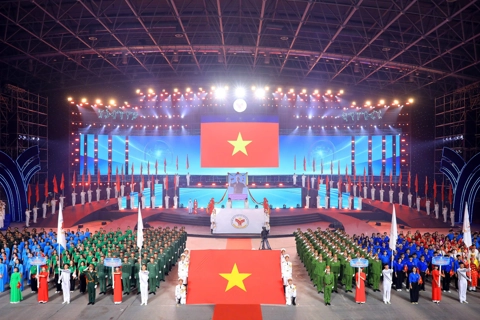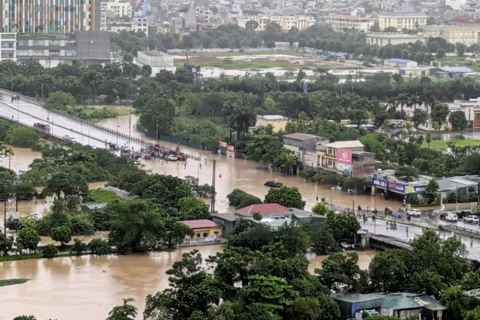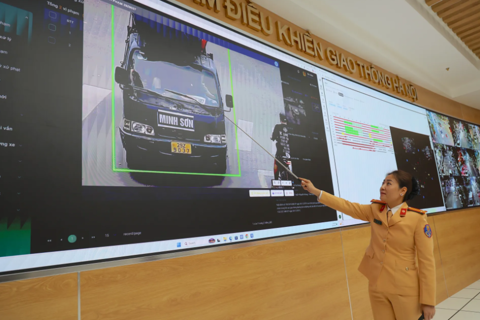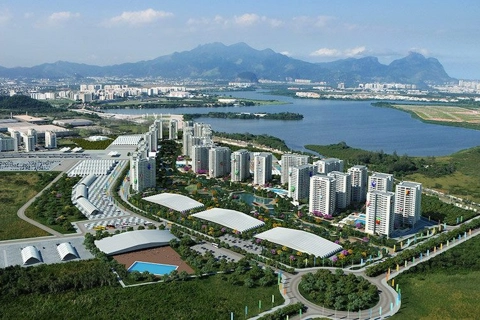Hanoi takes bolder actions to ensure clean air and people's health
When governments at all levels, departments, and branches take drastic and synchronous actions with the support of local residents, Hanoi's air quality will surely be improved.
The Hanoi government has rolled out a spate of measures to ease air pollution which has worsened during the winter in oder to ensure its citizens' health, according to Deputy Director of the municipal Department of Natural Resources and Environment Mai Trong Thai.
The authorities have removed more than 98% of coal stoves, reduced straw burning by 80% in the suburbs and eliminated hundreds of manual brick kilns, he said.
"Especially, the city has just implemented a program to measure the emissions of old motorbikes as a basis for researching and proposing solutions to improve air quality. Besides, the municipal People’s Committee has requested departments, sectors and localities to strengthen inspection and handle production facilities and construction works for causing air pollution; asked sanitation companies to wash roads and collecting waste to reduce dust in the air," Thai told The Hanoi Times.
Hanoi is contemplating stiffer actions to restrict private vehicles and ban those that do not meet emission standards to reduce air pollution. The municipal government is also speeding up relocating factories out of the inner city, strictly handling establishments that generate emissions exceeding the allowable threshold, affecting the environment and air quality, the deputy director stated.
Hanoi's low air quality is the result of transitional period. Photo: Pham Hung |
Thai emphasized the role of authorities, adding that the municipal government needs to strictly manage the means of transport, implement road space rationing and promulgate emission standards in line with technical and socio-economic conditions.
Thai said that the Ministry of Natural Resources and Environment is working with the Ministry of Construction and the capital’s government to relocate polluting factories away from Hanoi’s downtown.
He added that Hanoi’s authorities are informing real-time air quality indices to help its residents protect themselves and raise awareness over the matter.
Particularly, Thai’s department has been operating 35 automatic air monitoring stations, six surface water monitoring stations, a waste water monitoring station at Nam Son waste treatment complex in Hanoi’s outskirt district of Soc Son, and one mobile air monitoring truck.
“We have invested in rolling out 15 fixed air environmental monitoring stations, three radioactive monitoring equipment, five water monitoring stations, and six underground water monitoring stations. We have set the target to complete the environmental monitoring network in the city in 2021,” Thai said.
Besides, the municipal authorities have approved the urban area planning for the northern bank of the Red river.
According to Hanoi’s Construction Master Plan till 2030 with a vision to 2050 approved by the Vietnamese Government, the northern bank of the Red river is designed to be a new and modern urban area.
Many experts say this will be a great opportunity for reducing overpopulation and environment pollution in the downtown in the future.
With those measures, both taken and contemplated, experts and people expected that Hanoi air would be clean and the sky would be clear again.
"When governments at all levels, departments and branches take drastic and synchronous actions with the support of local residents, Hanoi's air quality will surely be improved," Thai stressed.
Vehicles are one of the main cause for air pollution. Photo: Hoang Son |
Air quality in many quarters of Hanoi's metropolitan area is worse during winter time and most of the city has been covered by a layer of thick smog since early December. For everyone to breath clean air, the drastic measures and cooperation of ministerial agencies and local residents are necessary.
Environmental expert Pham Hai Duong, from the Hanoi Environment Protection Sub-Department under the municipal Department of Natural Resources and Environment, made his statement in a recent interview with The Hanoi Times.
Duong has blamed the low air quality in recent days on the transitional period between seasons. “The northeast monsoon usually arrives in the northern part of Vietnam, including Hanoi, and the phenomenon of temperature inversion with some seasonal breeze makes the northern provinces’ air quality poorer,” he said.
Hanoi's current low air quality is the result of little air circulation in the atmosphere during the transitional period, Duong noted.
He added that temperature inversion also contributed to the capital city’s poor air quality as thermal radiation from the ground into the atmosphere causes fog at low altitude.
Besides, large-scale construction, huge number of private vehicles, intensive industrial activity like steel and cement production, and coal-fired power plants are among the causes, said President of the Vietnam Clean Air Partnership Hoang Duong Tung, who has spent many years researching on air quality in Vietnam.
"In addition to the main reasons such as heavy congestion, large-scale construction and straw burning, weather patterns during winter also make pollution levels worse than in other seasons," Tung added.
Vehicles are estimated to contribute 30 to 50% of urban emissions. However, as no proper research on pollutants has been published, Vietnam has not developed a priority policy to limit private vehicles.

.jpeg)



